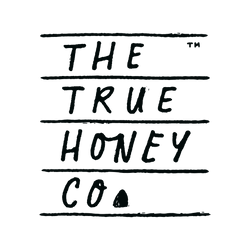
The helicopter plays a big part in our Manuka honey harvest. These finely tuned instruments let us place hives exactly where we want them – in dense stands of New Zealand’s remote Manuka bush, where the lovely sweet nectar of Manuka blossoms is their main food source.
Heliworx Aotearoa is a sister company to The True Honey Co. They are our eyes in the sky, and crucial to both placing hives and harvesting our high MGO rated Manuka honey. Because they’re so good at what they do, other honey producers call on them throughout the Manuka flowering season too.
In fact, legend has it that The True Honey Co. CEO and chopper pilot Jim McMillan first got the idea to make Manuka honey when he was flying above New Zealand’s pristine, Manuka-clad back country. (PS. This legend is absolutely true. We just wanted to add some suspense.)
Our beekeepers and logistics team work closely with Heliworx pilots who are experts in safe (for bees and humans) hive lifting, and highly respectful of landowners and their land. Their sterling efforts mean disruption to working farms is minimal, New Zealand’s environment is protected and Iwi (tribal) protocols are respectfully observed.
Heliworx also uses GPS and real-time satellite aircraft tracking, so our ground team can track, communicate with and view the fleet anywhere, and everyone can work with precision and speed.
Check out this beautiful video from Marc Hill on a recent day in the field with the Heliworx Aotearoa and our team – for a behind the scenes look at the work we do together.
paul greene or ‘greenie’ as folks affectionately call him, both flies for and manages the heliworx team. he landed just long enough this month for us to ask him a few questions about life, flying and simple pleasures.
How long have you been flying?
I did my first solo in 1987 in an R22 and my instructor was Ian Wakeling. I was 23, and it took me ten years to pull the money together to get my commercial in 1997. We didn’t have student loans back then, so I worked bulldozing and driving trucks and diggers getting the money together to get my licence. In 1993 I did 3,700 hours driving a digger, and every Sunday I would try and do two hours in the helicopter so in that year I got my Private Pilot Licence. It took another four years to gain my commercial. I now have 15,000 hours of flying under my belt.
Describe a typical workday in the life of Paul Greene
Rise at 3.30am, checking weather and checking in with the logistics teams and crew. If I’m organised I’ll have a big breakfast of chops, eggs, and tomatoes to get me started. We start flying while it’s still dark, as we want to keep the bees cool and calm. We fly for 6-8 hours per day placing bees into their designated sites. Then we return to base or the next shift destination and do a full pre-flight check on the equipment and helicopter. From there I’d be on the phone to our logistics team arranging the next day’s hives and accommodation, and the ground crew will be sorting fuel to take to the next location. The Manuka flowering season is so short in each region, so we’re geared up to go each day and the only thing that holds us up would be the weather.
What do you love about your job?
The part I love the best is getting around our beautiful country. I get to see parts of this country that others don’t. I feel privileged to be able to make memories from seeing New Zealand’s pristine landscape. I also enjoy the challenges of the job. It’s fair to say I’m a perfectionist in my flying and I like to challenge myself each day to better myself in terms of being tidy in the long-line work, guiding the hook into the crew member’s hands and placing the beehives gently with minimal disturbance.
What do you do in your spare time?
During the season there’s no spare time, we just need to make hay when the sun shines! But when I do get home, I like to go get in some exercise (I’ve been sitting for days), catch up with family and sleep. We headed to Shine Falls on Sunday, my first week back home in a while, it was spectacular.
Some other honey makers don’t use helicopters, what are the benefits to doing things this way?
We use helicopter to get our beehives into Manuka dense areas. This becomes their only food source for breakfast, lunch, and dinner. This approach means there are very few other contaminant nectar sources. We place the hives in natural clearings and this eliminates the need for bulldozers to clear roads. It’s more comfortable for the bees, they don’t need to rattle around on the back of a truck. It’s also much safer and easier on the ground crew as they don’t need to drive into these areas either.
What skills are specifically needed for this type of flying?
If a pilot came to me and wanted a job flying in this environment, apart from a clean helicopter record, I’d be looking for someone who’s very proficient at long-line operation (picking up, carrying and placing hives using long cables). A good understanding of tracmap – a GPS tool we use for placement of the hives. Meticulous with recordkeeping and equipment handling, as we’re constantly on the go, and these need to be done at the end of each day. An understanding of bees and their behaviour is also handy.
Why do you feel the R66 is best suited to this type of application?
I have flown 15 different helicopter types and the R66 perform more like the Hughes 500 D and E’s and the Jet Ranger in my experience. It is fairly maintenance friendly, uses about 83 litres of fuel an hour. It has a good luggage storage area and is fast and efficient for the task. Hives tare out at about 220kgs for 4 hives which allows us to lift in 2 pallets and desirably come out with 1 pallet. The 66 performs well here.
How do you use your Manuka Honey?
I use it daily, mostly first thing in the morning and usually in my first cup of coffee. I tend to use the 700+ MGO or the 850+ MGO, for a good boost of goodness to get me started for the day.
Tell us something no-one else knows about you?
Living in this close knit environment for near on four months of the year with the beekeepers, truck drivers and the helicopter team, there’s not much you can hide, you are fairly exposed. I am transparent, as anyone will tell you, not too much gets me grumpy. The simple things in life give me the greatest pleasure: Family, a rum and coke, and a roast leg of mutton usually do it. Oh and some of you readers might not know this, but I am married to the women who is asking me all these questions, the Communications & Marketing Manager, Ann.

